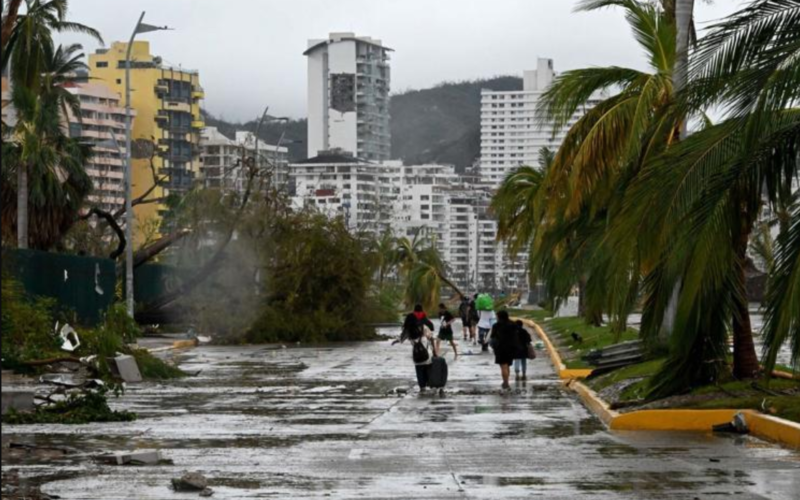Mexico finds itself in the wake of yet another powerful hurricane, Hurricane Otis, leaving a trail of destruction in its path. The resort city of Acapulco is among the hardest-hit areas, but with communication lines severed, the extent of the damage remains unclear.
Mexican President Andrés Manuel López Obrador traveled to Acapulco by land, as local airports remain closed due to the hurricane’s aftermath. During his journey, the president encountered debris from mudslides that blocked highways, at times necessitating travel on foot. “The army is bringing machinery, and we’re going to try to reopen [the highway] as soon as possible,” President López Obrador stated, emphasizing the urgent need for recovery efforts.
While there have been no reported fatalities thus far, officials have raised concerns regarding the disrupted landline and mobile phone coverage, which has hindered their ability to gain a comprehensive understanding of the situation.
Amateur footage captured by tourists on their mobile phones reveals the scale of destruction in Acapulco. Streets are strewn with debris, buildings have shattered windows, and roofs have been torn asunder. Flooding has affected many areas, further compounding the challenges faced by residents and relief efforts.
The Mexican Ministry of Defense reported that 8,000 soldiers have been dispatched to Acapulco and other coastal towns to assist with cleanup and recovery operations.
Hurricane Otis made landfall at 00:25 local time on Wednesday, intensifying from a tropical storm to a category five hurricane—the most severe category—in just 12 hours. It brought sustained winds of 165 miles per hour to the coastal regions before gradually weakening.
Citlali Portillo, a tourism sector worker in Acapulco, recounted how “the building shook as if there was an earthquake,” describing the terrifying experience as Hurricane Otis battered the region. Videos captured guests seeking refuge in bathrooms and other windowless areas to avoid injury from shattered glass propelled by the ferocious winds. The facade of a shopping center in Acapulco was torn away, illustrating the hurricane’s destructive force.
More than 30% of homes in the state of Guerrero lost power, plunging entire towns into darkness. While the hurricane’s wind intensity subsided as it moved further inland, Mexico’s meteorological service cautioned that torrential downpours are likely to continue to affect Guerrero. Additionally, states such as Michoacán, Mexico State, Morelos, and Oaxaca should brace for very heavy rainfall. The US National Hurricane Center warned that the prolonged rainfall could result in flash floods, urban flooding, and mudslides in elevated areas.
The aftermath of Hurricane Otis underscores the need for swift and efficient recovery efforts as communities in affected areas strive to rebuild and return to normalcy.








